
Eco-Friendly Design: Are You Sitting Sustainably?
June 11, 2021
Plastic bottles and discarded fishing nets may not be glamorous, but these are the raw materials that designers are now using to create desirable homeware, from award-winning chairs to beautiful bespoke kitchens. These unlikely ingredients are a key part of the sustainable or eco-friendly design movement—products that tread lightly on the planet thanks to their raw materials, manufacturing processes, and the way they are packaged and sent to the consumer.
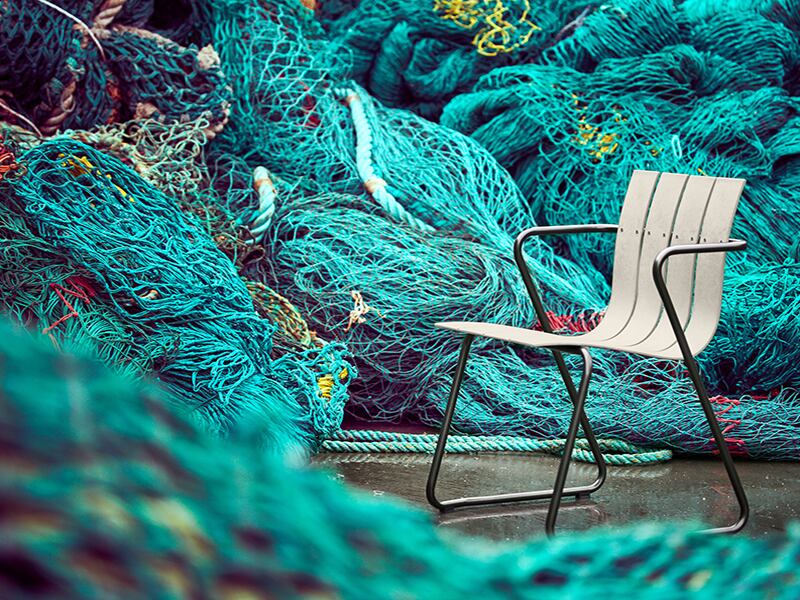
This movement has been some decades in the making. In 1971, the Austrian-American designer Victor Papanek published the book Design for the Real World, in which he declared that “there are professions more harmful than industrial design, but only a few.”
Sustainable design is one of the most significant movements in decades—David Rockwell
Papanek went on to accuse his fellow designers of producing work that wasted natural resources, worsened the environmental crisis, and ignored their social and moral responsibilities. At the time he was widely attacked for his views. However, by 1985, when the second edition was published, the preface noted that it had been translated into more than 20 languages and had become “the most widely read book on design in the world.”
Today, Papanek is no longer a lone voice in the wilderness. Driven by a genuine desire to work sustainably, combined with growing consumer demand for eco-conscious products, designers are increasingly working with the planet in mind. At design shows across the world, recycling and the use of waste products are constant themes, with both emerging and established designers seeking to find eco-friendly ways to respond to the climate crisis.
Related: Discover 6 Innovative Eco-Friendly Design Solutions
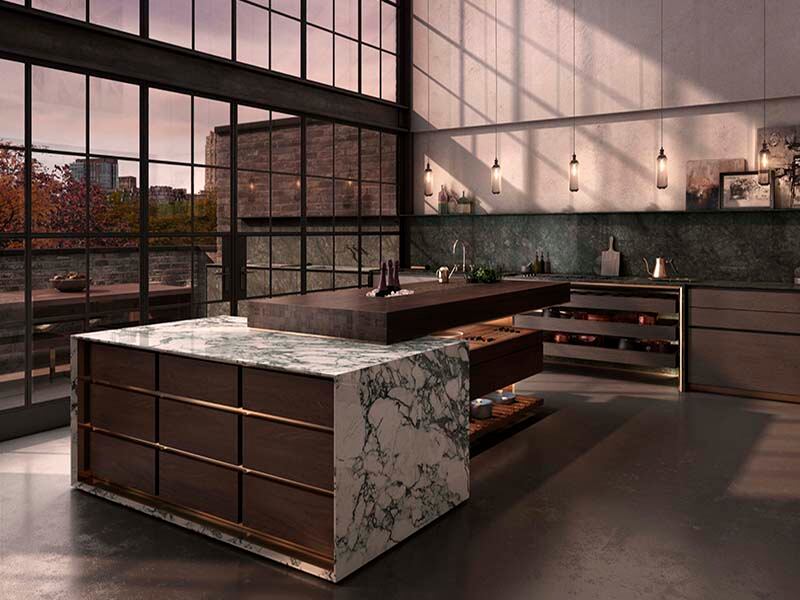
“Sustainable design, with an emphasis on reducing energy emissions, promoting green building materials, and positively affecting the environment, is one of the most significant movements in decades,” says David Rockwell, founder and president of the award-winning American architecture and design firm Rockwell Group. “It aims to build a better future for generations to come.”
Green Design, Eco-Friendly Materials
For British furniture maker Benchmark, which has a “forest to finished piece” ethos, Rockwell created the Sage Collection: tables, desks, and seating that are beautiful and functional but also environmentally friendly.
The expertly crafted timbers—such as walnut and oak—are sourced from forests that meet the economic, environmental, and social standards of the Forest Stewardship Council (FSC), while the padded sections are made with sustainable and non-toxic coir, latex, sheep’s wool, and recycled cotton. They are then upholstered in natural wool, which is inherently fire retardant so the fabric does not need to be treated with chemicals.
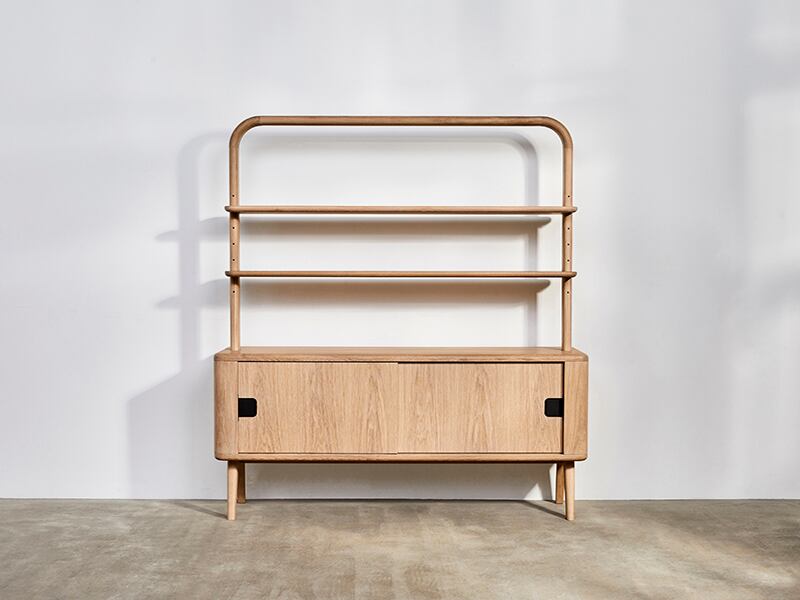
“We wanted to create a product that is as good for people’s well-being as it is for the planet, so we used the tenets of biophilic design to frame the collection,” says Rockwell. “This meant natural materials, colors, and textures, rounded profiles, and inviting ergonomic shapes.”
Bamboo is an increasingly popular natural material. “It has a high mineral content and is a natural disinfectant, which makes it great to use in a food preparation area,” says Alex Beaugeard, director of design at Lanserring, the kitchen company that operates from its workshops at the foot of Riegersburg Castle in Austria, and its design studios in Vienna and west London. “It’s a grass rather than a wood, and because it has a fast growth rate it’s a renewable resource; using it has very little impact on the environment.”
Lighting designer David Trubridge also uses bamboo, but in a very different way. He takes ultra-thin strips of bamboo “plywood” to create his eye-catching sculptural lights that throw evocative shadows around a room. As well as bespoke pieces, Trubridge makes lighting kits, shipping them around the world from his New Zealand studio to be assembled by their owner on arrival.
Related: Light Up Your Home With These 6 Sustainable Ideas
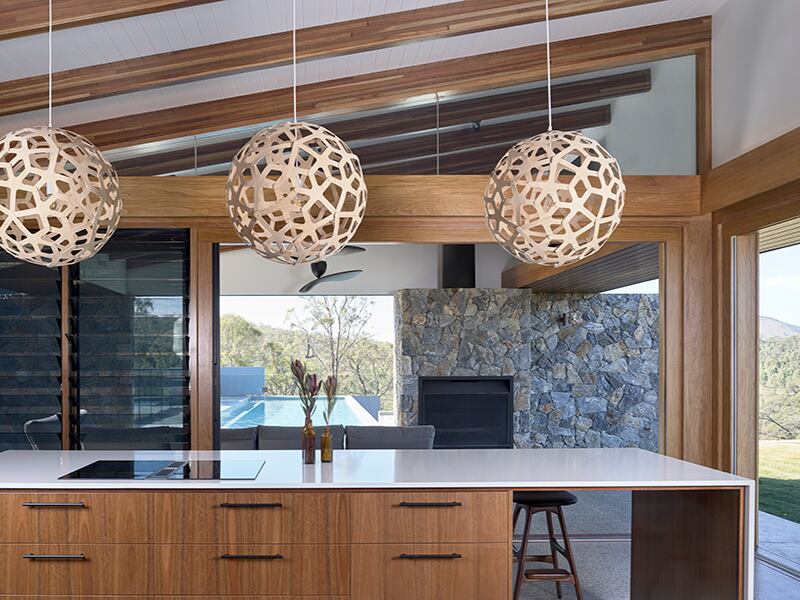
“It’s an environmentally responsible design because although the finished product is large, the volume is tiny—minimum material for maximum effect,” says Trubridge. “And this means they can be shipped in very small boxes, which also reduces their carbon footprint.”
Today’s consumer is seeking out those companies who can show that they care about what they are putting out into the world—Jaye Buchbinder.
British brand Earthborn has used natural clay to create a range of paints that are certified to the highest possible environmental credentials. Free of oil or acrylic, the 72-color range has a low percentage of volatile organic compounds (VOCs), chemicals that are thought to have an impact on health.
“The mineral content of the paint allows a wall to breathe, so it is better for the building, but it also helps with reducing allergies in people,” says Cathryn Sanders of Earthborn. “Our entire manufacturing process is sustainable, from the extraction of the clay to the manufacture of the paint.”
Related: Check Out the Top Ten Eco-Friendly Features for Today's Luxury Homes
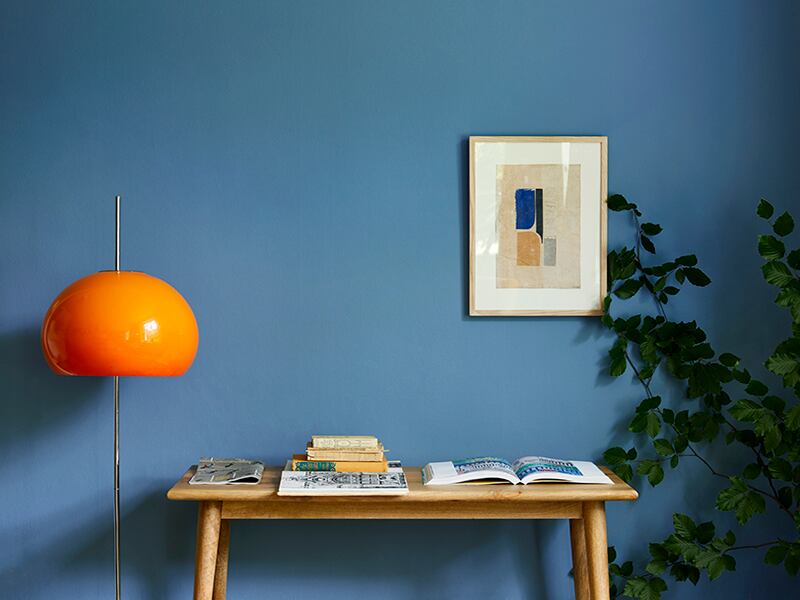
Waste Not, Want Not
With waste at the top of the environmental agenda, repurposing what we throw away has become a focus of eco-friendly design. Pennsylvania-based Emeco created its 1006 Navy chair—made for U.S. submarines during WWII—from recycled aluminum.
“At the time, the company wasn’t being a pioneer in sustainability—salvaged aluminum was just what was available,” says Jaye Buchbinder, product development engineer at the heritage furniture maker. “However, when my father bought the company in the late 1990s, this tradition was continued; we had always used recycled materials so why would we stop now? Why not look into other waste streams and other materials to make high-end furniture?”
This ethos has led to Emeco collaborating with a roll call of top designers. The Broom chair was made with Philippe Starck, from 75 percent waste plastic and 15 percent reclaimed wood fiber that would normally be swept into the bin. In collaboration with Coca-Cola, Emeco created a new material from rPET (recycled polyethylene terephthalate), mixing the plastic from 111 discarded bottles with fiberglass to design the 111 Navy chair. More recently, Barber & Osgerby used rPET to create the award-winning On and On chair, which can be continually recycled.
Related: Explore 8 Exceptional Eco-Friendly Estates
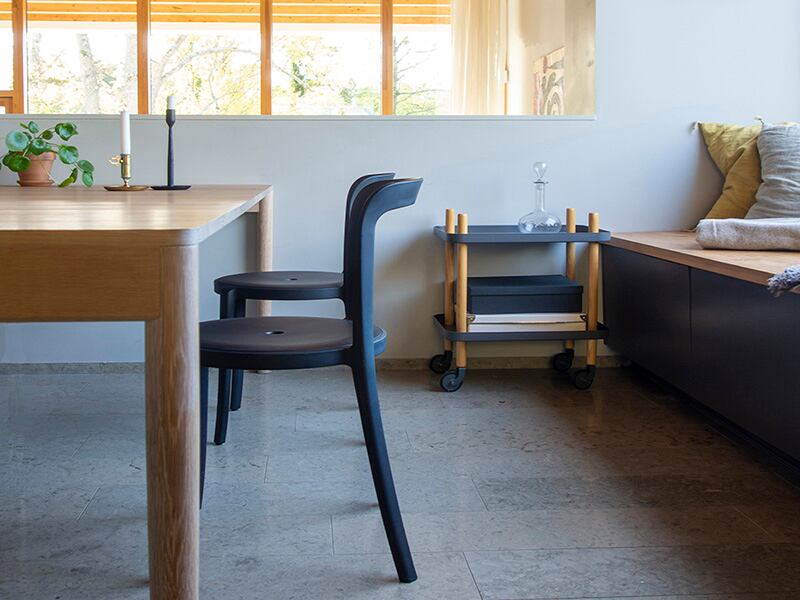
Danish brand Mater addresses the impact of ocean plastic waste with its prizewinning Ocean Collection, using recycled fishing nets and hard plastic to reimagine the 1955 table and chair set by renowned designer Nanna Ditzel.
“We’re facing a global recycling crisis with waste plastic filling the ocean, being left carelessly on land and blown or washed into the sea,” Henrik Marstrand, founder and CEO of Mater, said at the collection’s launch. “If we can create a product that is attractive, functional, and durable, while cleaning up after the side effects of our collective consumerism, it’s a win-win.”
Another Danish brand, Kvadrat, is tackling textile waste. While 95 percent of textiles can currently be recycled, only 25 percent actually are. In response, Kvadrat, which collaborates with the world’s major brands, designers, and architects, including Sir David Adjaye and Patricia Urquiola, has launched Really. This collection of high-quality engineered materials is made from end-of-life cotton and wool sourced from fashion and textile industries, industrial laundries and cutoffs from Kvadrat itself.
“We want to encourage the design and architecture industries to rethink their use of resources and to design their eco-friendly products with a circular economy in mind,” says Wickie Meier Engström, director and partner of Really.
Other major offenders when it comes to throwaway plastic are children’s toys. Antwerp-based company EcoBirdy takes old, unused plastic toys and transforms them into playful pieces of furniture that are soft to touch with an attractive speckled appearance.
The end product is not the only measure of eco-friendly design—the entire manufacturing process is open to scrutiny. Emeco has adjusted its methods to reduce its water consumption and now measures and declares the carbon footprint of all its products. “Today’s consumer is moving away from simply buying brand names to seeking out those companies that have a transparent supply chain, and who can show that they care about what they are putting out into the world,” says Buchbinder.
At Lanserring, more than 70 percent of the energy used is hydroelectric, and in the winter the workshop is heated with briquettes made from scrap wood waste. “Our customers want to feel good about what they are buying for the home,” says Beaugeard. “I believe luxury today is defined by adherence to sustainable principles and that it will continue to be the dominant factor determining luxury for years to come.”
Banner image: David Trubridge's Coral Light—a stylish and sustainable addition to any living space. Image: Petr Krejčí

